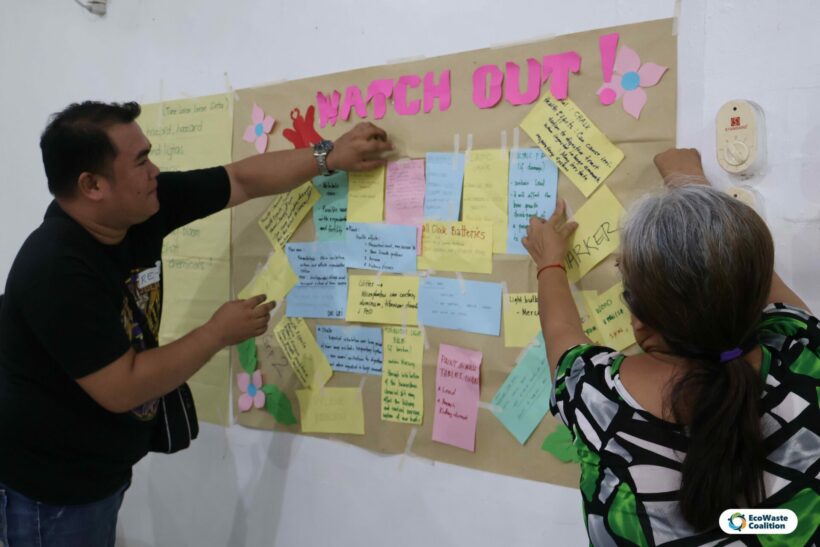11 June 2024, Quezon City. As public school teachers in the country take a well-deserved vacation from the hustle and bustle of school life, a group of some 100 elementary and high school teachers took part in an interactive learning activity aimed at protecting the health of their students and themselves from hazardous chemicals, particularly in the school setting.
The seminar held on June 11, 2024 at the Caloocan High School was organized by the EcoWaste Coalition and the Ateneo School of Medicine and Public Health – Center for Research and Innovation (ACRI), which have partnered to “raise awareness on the effects of the exposure to toxic chemicals on the health and environment of vulnerable populations and communities through the conduct of research and public education campaigns.”
Held in collaboration with the Teachers’ Dignity Coalition (TDC), an organization that envisions “a nation that places great value on the education of its people and recognizes the importance of teachers and the dignity of the teaching profession,” the seminar attracted more than 100 teacher-leaders from the National Capital Region, Central Luzon and the Cavite, Laguna, Batangas, Rizal and Quezon (CALABARZON) Region.

Environmental health specialist Dr. Geminn Louis Apostol discusses the various sources of childhood lead exposure.
After a plenary talk on common chemical hazards and their effects on human health by Dr. Geminn Louis Apostol, environmental health specialist at ACRI, breakout sessions were held to stir up participants to identify these hazards in the classroom and create innovative information and advocacy materials aimed at educating others, especially the students, about these hazards.
“Schools should be sanctuaries where students feel secure, supported, and inspired to learn. Classrooms, as the primary spaces where children spend a significant portion of their day, play a critical role in shaping their health, development, and overall well-being,” said Apostol. “Ensuring these spaces are free from chemical risks is fundamental to protect the health of our children and promote a conducive learning environment.”However, schools, like other facilities, make use of hazardous chemicals for a variety of reasons, including educational opportunities (science laboratories or art classes), cleaning and sanitation purposes. These chemicals can unintentionally or sometimes intentionally be released.

Teachers Maribel and Rey identify some of the chemical hazards in the classroom.






